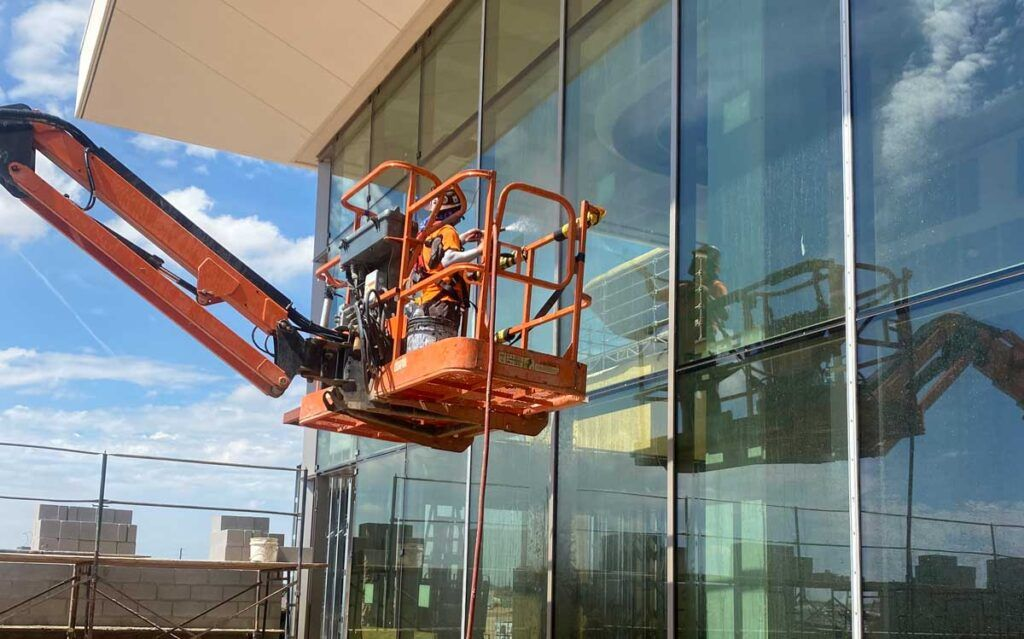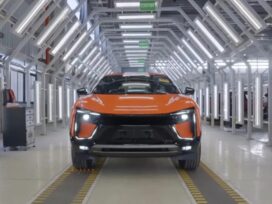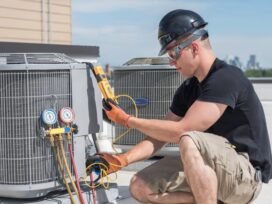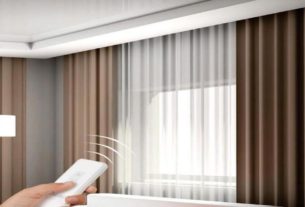
Optimizing Transparency: Innovations in Commercial Glazing and Windshield Replacement Solutions
In an era where both structural aesthetics and safety are paramount, innovations in glass technologies are making significant strides. The sectors of commercial glazing and windshield replacement are witnessing rapid advancements, driven by the demand for improved performance, energy efficiency, and durability. This article explores these innovations, emphasizing how they enhance transparency, safety, and functionality in their respective domains.
The Evolution of Commercial Glazing
Energy Efficiency and Environmental Sustainability
Commercial glazing has evolved from simple glass panels to sophisticated systems that significantly contribute to a building’s energy efficiency. Modern commercial glazing solutions include double-glazed and triple-glazed units that provide excellent insulation. These glazing systems help maintain a consistent indoor climate, reducing the need for artificial heating and cooling.
Low-emissivity (Low-E) coatings are another innovation that enhances the performance of commercial glazing. These coatings minimize the amount of ultraviolet and infrared light that passes through the glass without compromising the amount of visible light transmitted. This results in better thermal insulation, lower energy costs, and reduced carbon footprint, aligning with global sustainability goals.
Enhanced Safety and Security
Safety and security are critical considerations in commercial buildings. Innovations in glazing technology now offer options such as laminated and tempered glass, which are much stronger and safer than traditional glass. Laminated glass consists of two or more layers of glass with an interlayer of polyvinyl butyral (PVB) or ethylene-vinyl acetate (EVA). This composition not only makes the glass more resistant to breakage but also ensures that it holds together even when shattered, preventing injuries and deterring break-ins.
Tempered glass, on the other hand, undergoes a heat treatment process that increases its strength. When broken, it crumbles into small, blunt pieces rather than sharp shards, significantly reducing the risk of injury.
Aesthetic and Functional Flexibility
Commercial glazing is not just about functionality; it’s also about aesthetics. Modern glazing solutions offer a wide range of options in terms of color, texture, and design. From tinted and frosted glass to decorative patterns and digital printing, architects and designers have numerous possibilities to enhance the visual appeal of a building while maintaining transparency and light transmission.
Additionally, smart glass technologies are revolutionizing commercial glazing. Electrochromic and photochromic glasses can change their tint in response to electrical currents or sunlight, respectively. This dynamic control over transparency and light transmission enhances both energy efficiency and occupant comfort.
Innovations in Windshield Replacement
Advanced Materials and Manufacturing
Windshield replacement technology has significantly advanced, with the introduction of new materials and manufacturing processes that enhance durability and safety. Modern windshields are typically made from laminated glass, which consists of two layers of glass with a plastic interlayer, usually made of PVB. This construction ensures that the windshield remains intact upon impact, protecting the vehicle’s occupants from debris and maintaining the structural integrity of the vehicle.
Recent developments in the use of advanced polymers and composites are making windshields even stronger and more resilient. These materials not only improve the safety features of the windshield but also enhance its resistance to environmental factors such as UV radiation and temperature fluctuations.
Technological Integration
Today’s windshields are more than just barriers against wind and debris; they are integral parts of the vehicle’s technological ecosystem. Many modern vehicles are equipped with advanced driver-assistance systems (ADAS) that rely on sensors and cameras mounted on or around the windshield. Innovations in windshield replacement now ensure that these systems are seamlessly integrated and recalibrated after installation.
This technological integration includes features such as heads-up displays (HUDs), rain sensors, and light sensors, all of which enhance the driving experience by providing critical information directly on the windshield and improving visibility and safety under various conditions.
Convenience and Efficiency in Replacement Services
The process of windshield replacement has also become more efficient and customer-friendly. Mobile windshield replacement services allow technicians to perform replacements at the customer’s location, reducing downtime and inconvenience. Additionally, advancements in adhesive technologies mean that windshields can be installed and ready for use much faster than before, often within a couple of hours.
Moreover, many service providers now offer online booking and digital assessments, streamlining the process and ensuring that the correct windshield is available for each specific vehicle model. This efficiency not only improves customer satisfaction but also enhances the overall safety of the vehicle by ensuring a perfect fit and proper installation.
Synergies Between Commercial Glazing and Windshield Replacement
While commercial glazing and windshield replacement serve different purposes, the innovations in each field often overlap and complement each other. Both sectors prioritize transparency, safety, and energy efficiency. For instance, the use of laminated glass in both applications highlights the importance of maintaining structural integrity and protecting occupants, whether in a building or a vehicle.
Additionally, the advancements in smart glass technology can benefit both commercial buildings and automobiles. In commercial settings, smart glass can optimize light and temperature, while in vehicles, it can enhance visibility and comfort. As these technologies continue to evolve, we can expect further cross-pollination of ideas and solutions between these two sectors.
Conclusion
The innovations in commercial glazing and windshield replacement are transforming the way we think about glass in both architectural and automotive contexts. From enhanced energy efficiency and safety features to aesthetic flexibility and technological integration, these advancements are optimizing transparency in more ways than one. As we move forward, continued research and development in these fields will undoubtedly lead to even more sophisticated and multifunctional glass solutions, benefitting both industries and their end-users.








